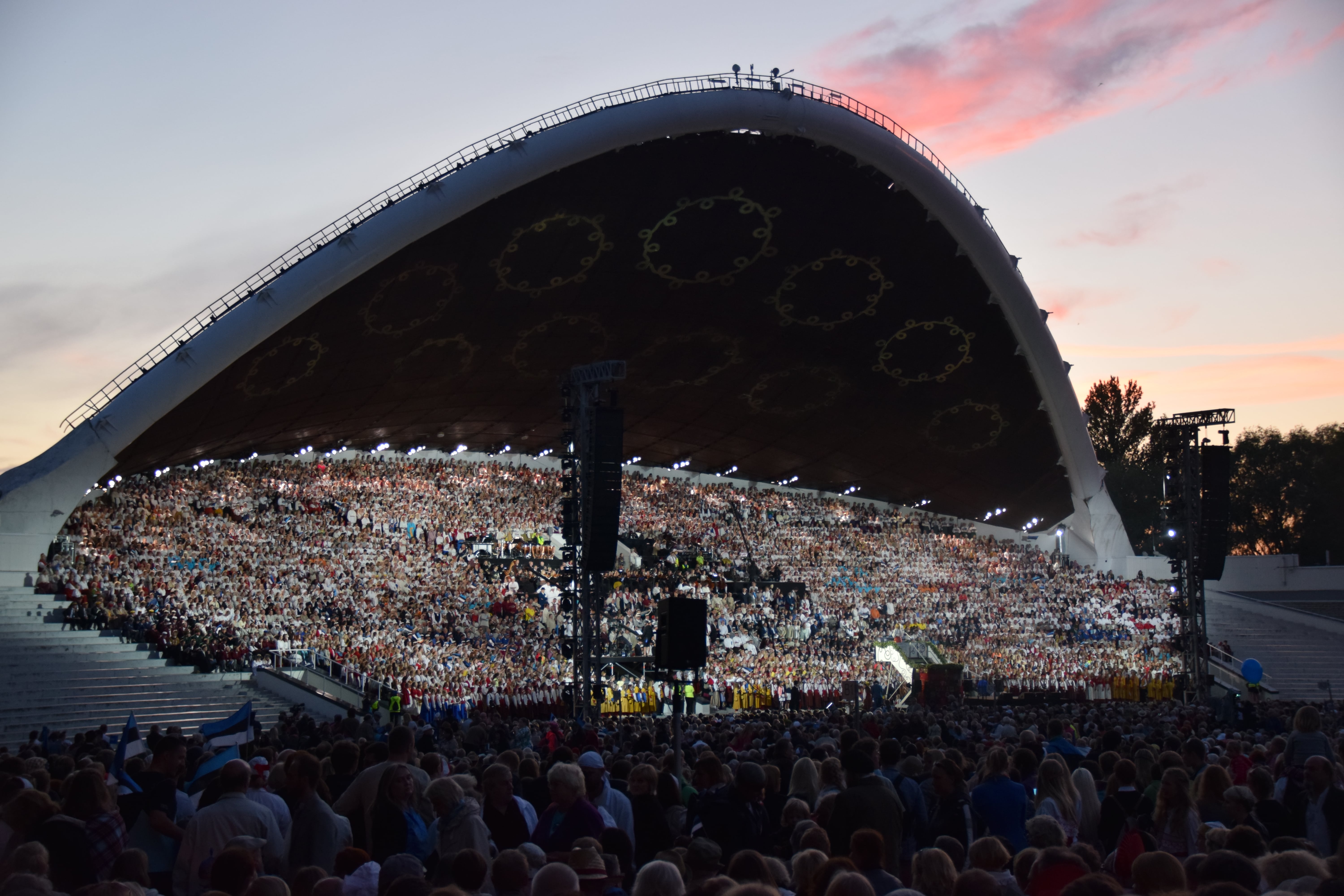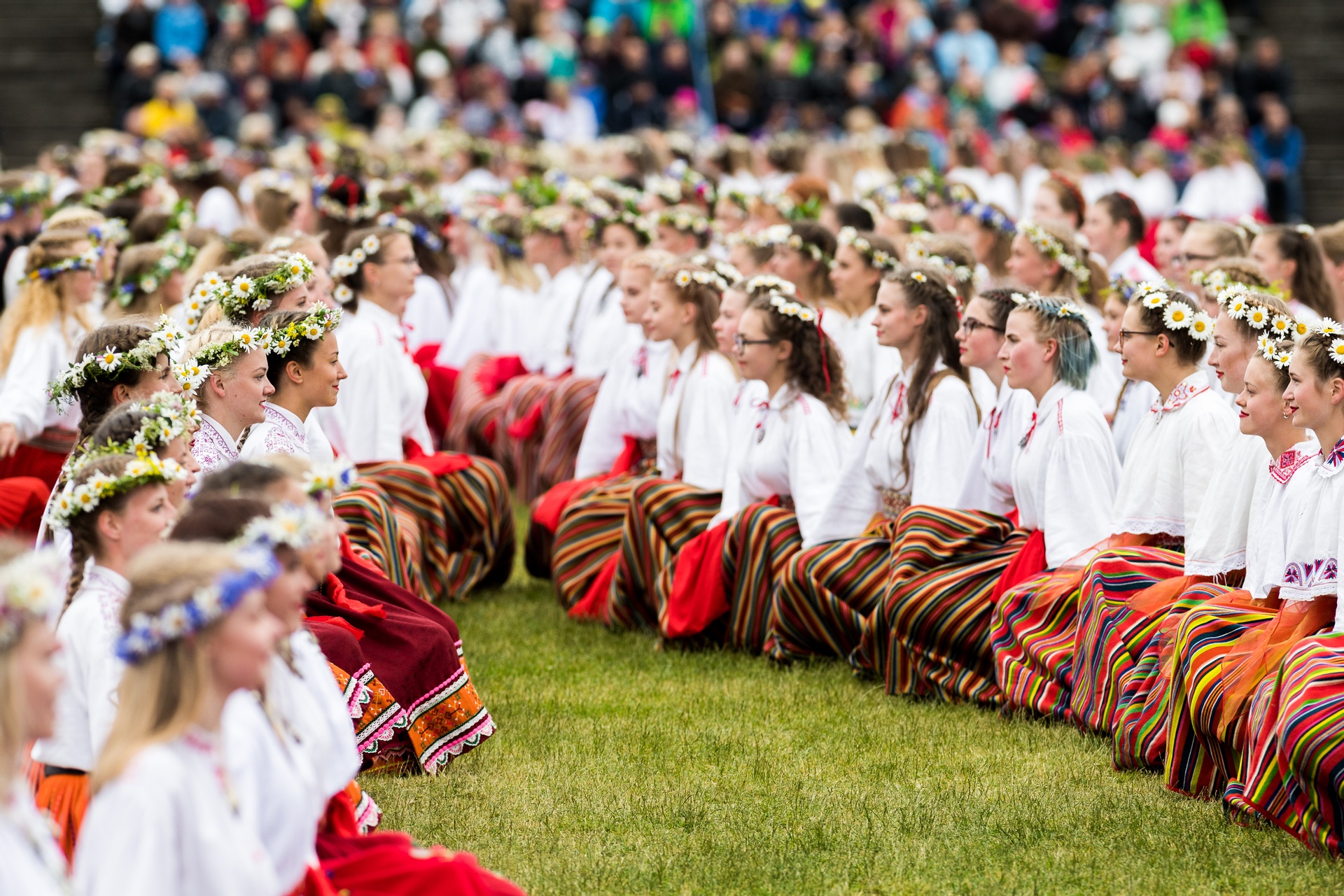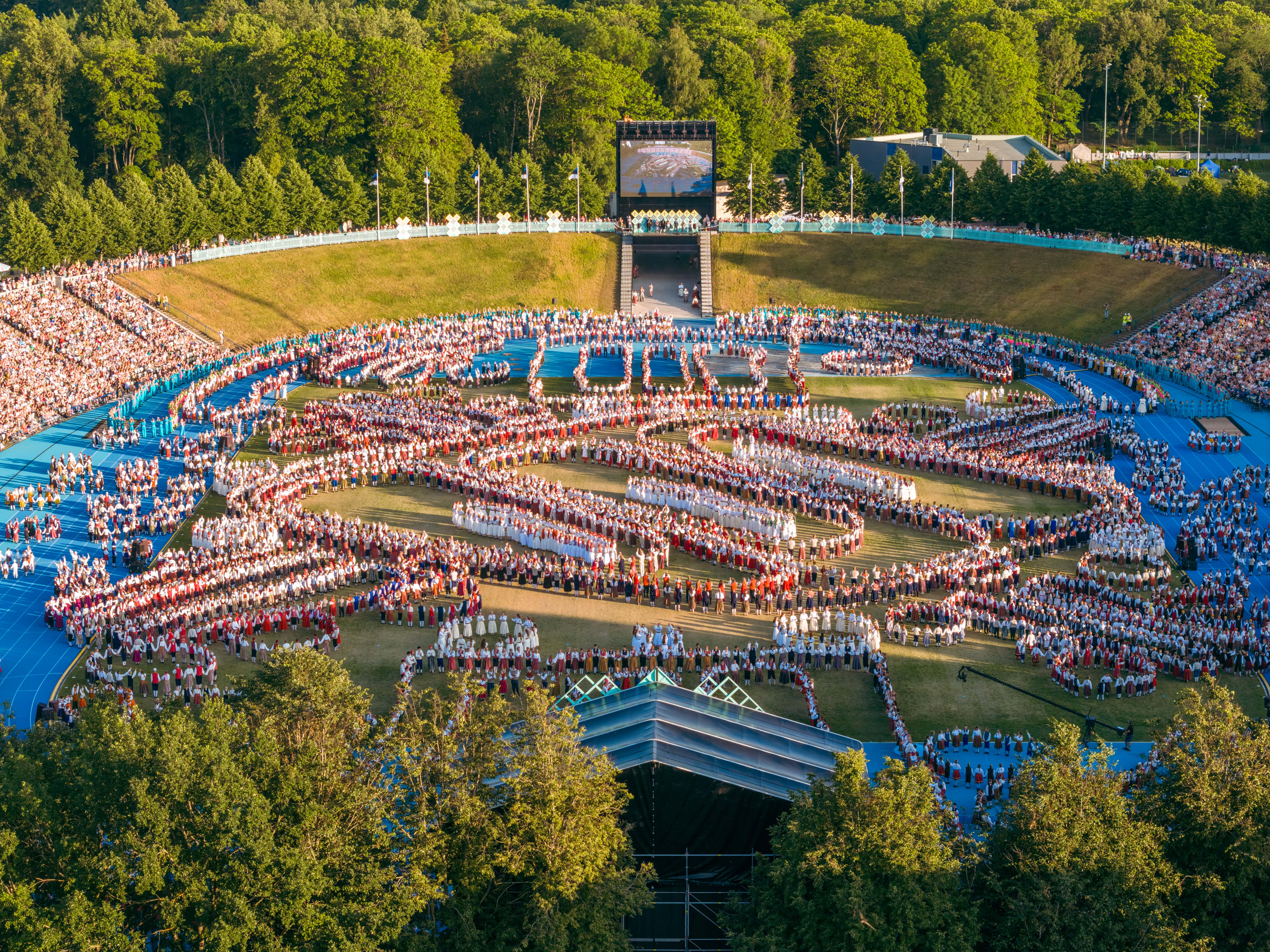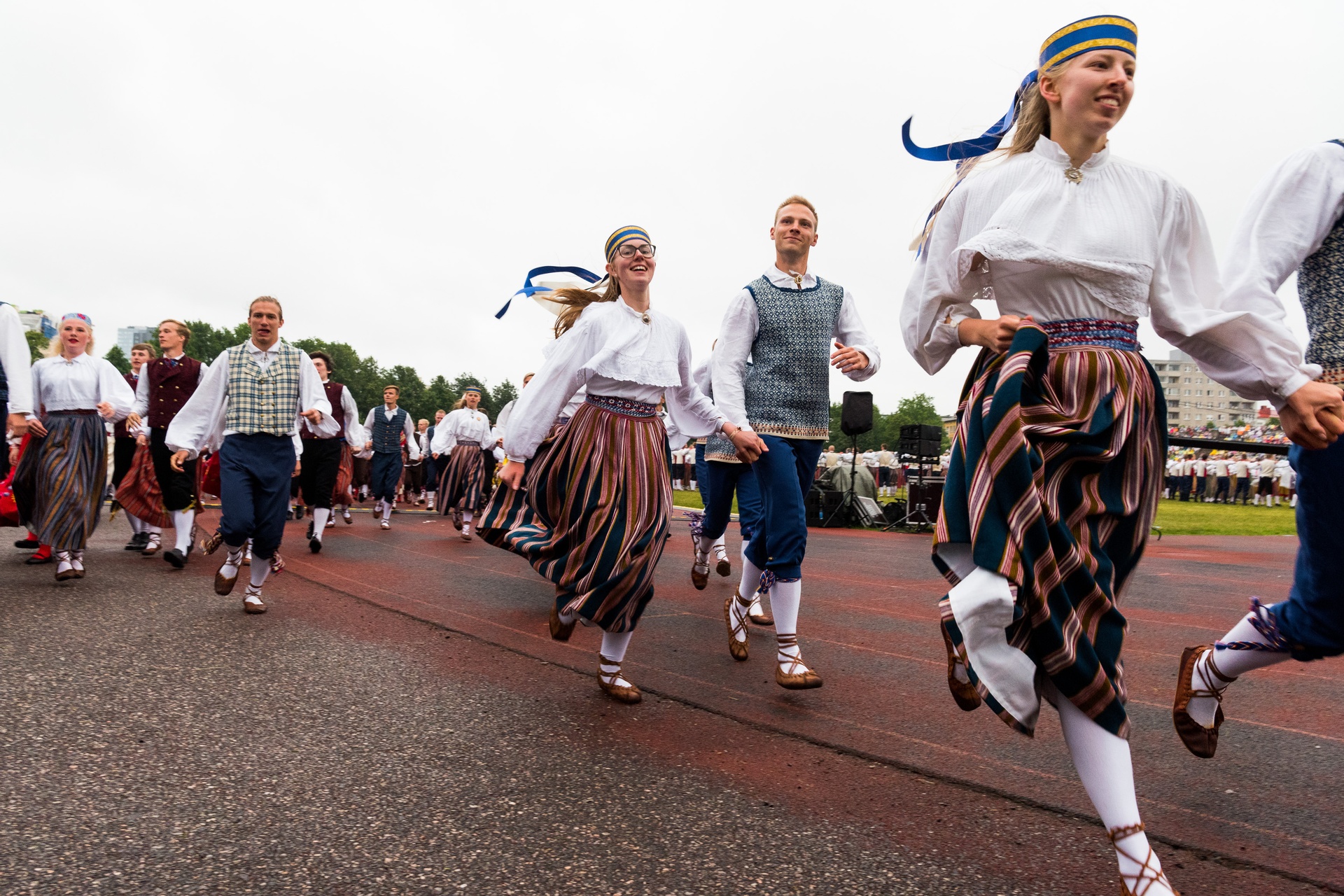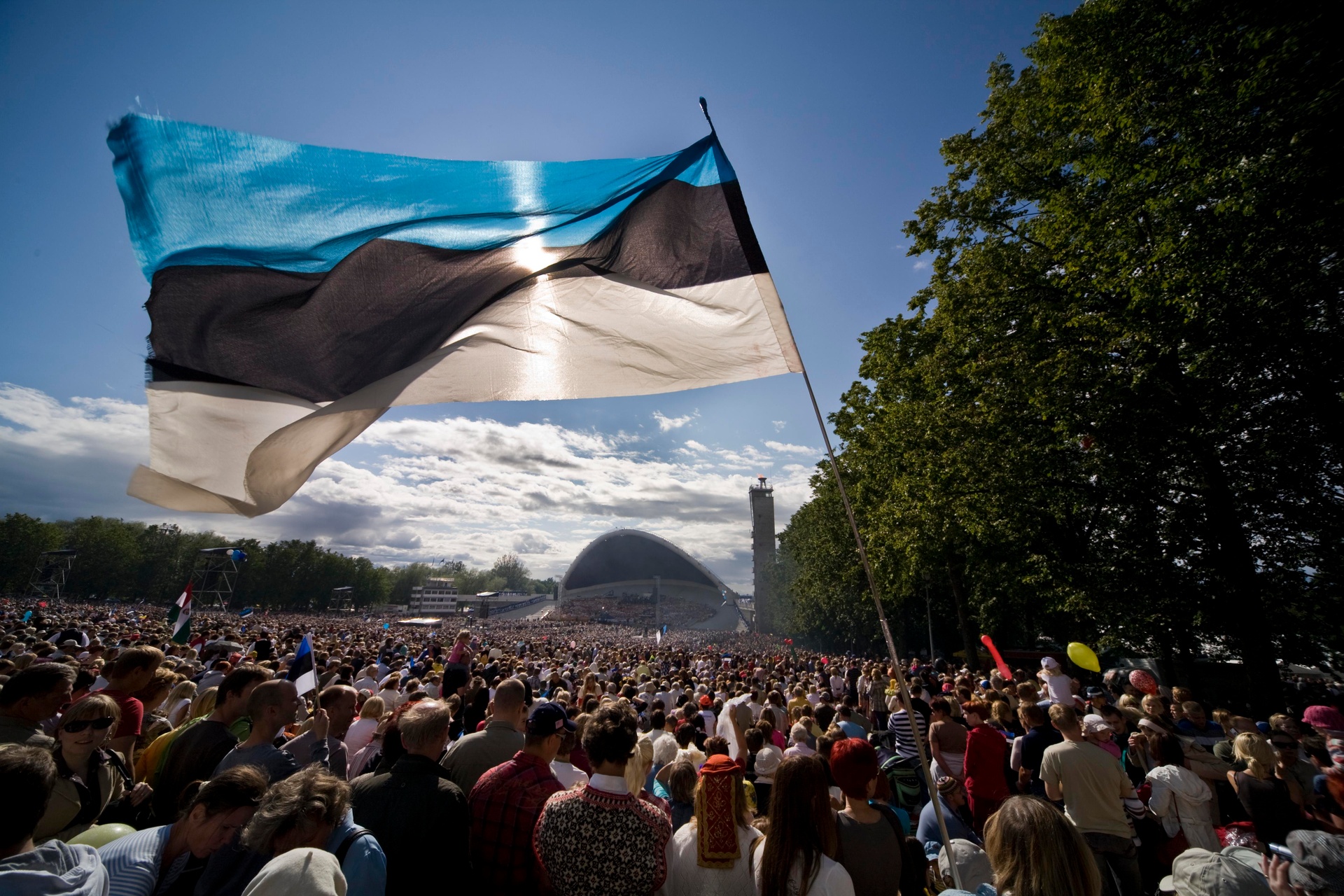
Experience Estonia's Song & Dance Festival
First held in 1869, this massive cultural event has become an important expression of Estonian identity.
If you ask an Estonian to talk about Estonia, you will likely hear about the Song and Dance Festival.
Probably because the song and dance festival is not just a big summer event that takes place every five years, but it is a way of being that helps us better understand ourselves and carries all the important values that we consider important as a nation — love for your country, language, culture, and customs.
The Song Festival has grown steadily since 1869, when the first festival was held in Tartu under the leadership of Johann Voldemar Jannsen, and has kept pace with the times. Only male choirs and wind orchestras, with a total of a thousand performers, participated in the first song festival. Over time, mixed, children's, women's, and boys' choirs, hobby symphonies, and toddler choirs were added. The party moved to Tallinn, where the first dance party took place in 1934. Since 1947, song and dance festivals have mostly been held together.
Tens of thousands of voices rise up in song.
Just being there will give you goosebumps.
The song and dance festival is often called a family reunion.
Song and dance festivals have been constantly evolving. Several traditions have become a part of this party. A torch is lit in Tartu, the birthplace of the festival. Like an Olympic fire, the torch travels throughout Estonia to Tallinn, where thousands of folk dancers first wait for that fire for a dance performance at Kalev Stadium. An integral part of the dance festival is the authentic Estonian folk costumes that make the dance stadium shine beautifully.
All the party participants will come to the song festival in a festive procession. The procession is followed by a song festival, which always begins with Aleksander Kunileid's song "Dawn".
The special feeling of the song and dance festival is also sought between the parties, and smaller regional song and dance festivals are held for this purpose. Thus, the song and dance festival has become a sail, which has helped the Estonian people to move towards common goals through very different times. On the other hand, a song and dance festival is often an anchor that brings Estonians from around the world together and connects them with their homeland.
An unforgettable celebration
Song and Dance Celebrations are on the UNESCO List of Intangible Cultural Heritage.
It takes nearly two years to prepare for each festival.
After the artistic directors have put together the program, registration for the festival for choirs, orchestras, and dance groups will be announced. This usually takes place 1.5 to 2 years before the start of the next festival. Foreign ensembles can also participate in the song festival — for this, they have to register their ensemble for the party in time and then acquire a repertoire, which is mostly Estonian.
The audience can start preparing for the party six months before the party when the tickets will go on sale. The dance festival will feature three identical performances at Tallinn's Kalev Central Stadium, lasting about two hours. Each show can accommodate 10,000 spectators. The song festival will take place on the Tallinn Song Festival Grounds, accommodating approximately 70,000 spectators at a time.
A record-breaking performance
The song and dance festival in 2019 had 44 times more participants than the first song festival in Tartu. Tickets ran out for both the dance festival and, for the first time in history, the song festival, which gathered 100,000 people together at once. Such a huge interest in the song festival shows that the tradition on the UNESCO World Heritage List is alive and important regardless of age or social status.
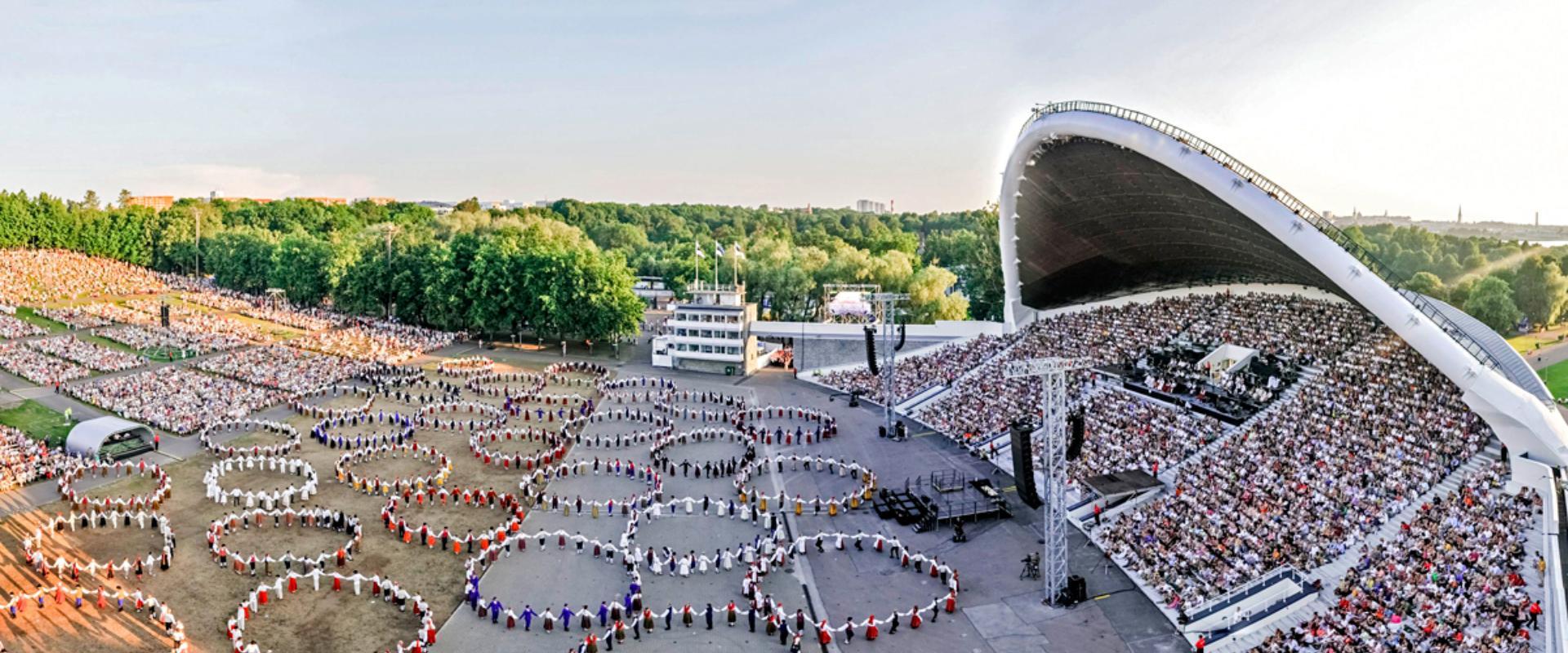
The feeling of a song and dance festival is inexplicable and can only be perceived by being a part of it - whether as a singer-dancer or a spectator. Although the National Song and Dance festivals usually happen every five years, the global COVID-19 pandemic has altered the party preparation periods.
As a result, the next general Song and Dance Festival will take place in 2025. Hopefully, from then onwards, we will return to the usual rhythm. The next youth festival will take place again in 2027, and the next general song and dance festival in 2029.
Join the celebrations!
- 3-6 July 2025: XXVIII Song Festival and XXI Dance Festival
- 2-4 July 2027: XIV Youth Song and Dance Festival
- 29 June - 1 July 2029: XXIX Song Festival and XXII Dance Festival
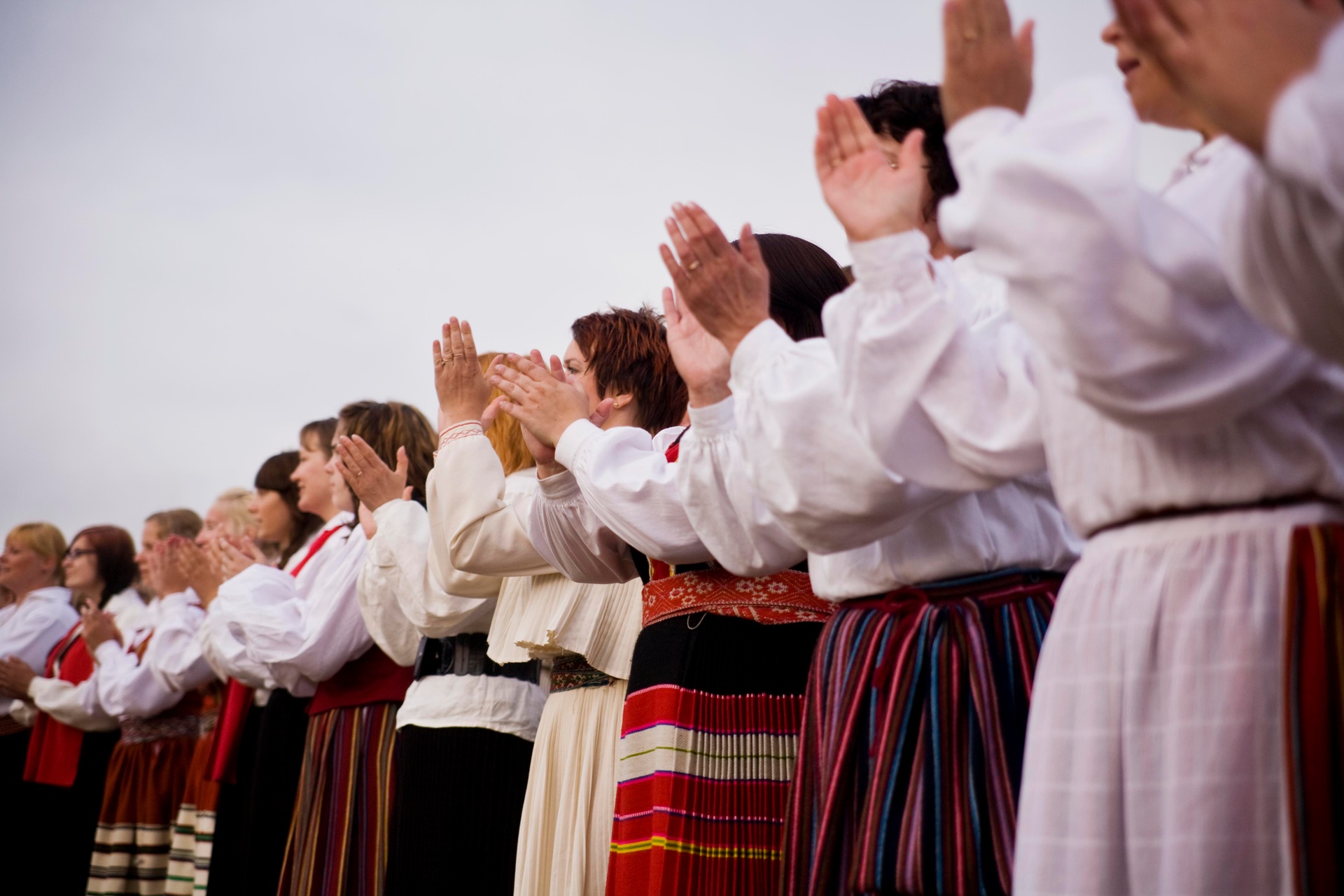
Last updated
28.04.2024

